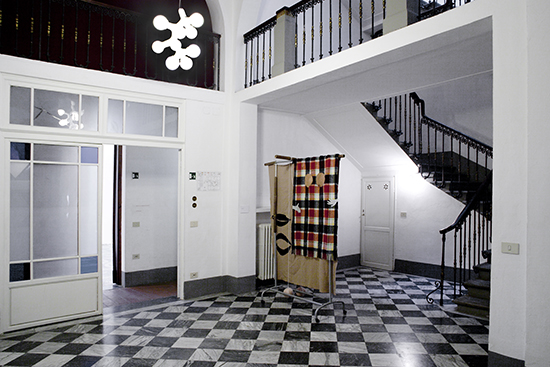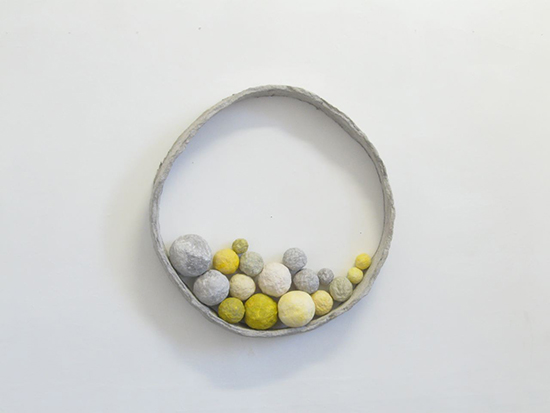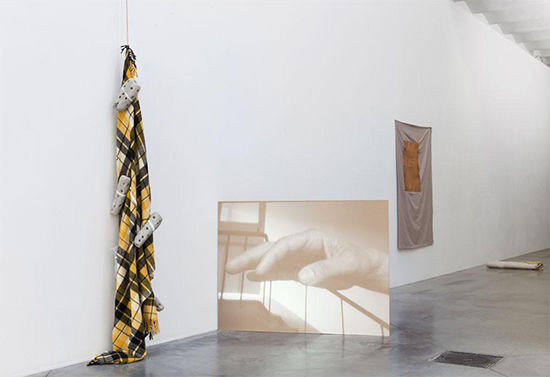Heide Hinrichs - Uncertainty and Joy
She spent the last ten months in Florence - fellow artist at Villa Romana - where we got to know Heide Hinrichs and her suttle language of uncertainty and joy. Her three-dimensional alphabet sources from and give substance to the limits, the limitations and the porosity of the relationships between body and space. Her interest is in finding in language - in its components and syntax, be it a written or a body lexicon - a tool to explore our experience and our perceptions of ourselves in the outside world.

Heide Hinrichs - Villa Romana Fellows 2013, exhibition view, ph. Giulia Del Piero, Archivio Villa Romana, Firenze.
The recent works she has done are connected and based in interpretation of literature and use the experimental text Dictee by Korean-American artist Theresa Hak Kyung Cha as its source, being one part of the work a literal translation and a second part a translation into sculptural works. Dictee (dictation) is very much concerned with human comunication: it is a struggle to articulate a certain kinf of pain into utterance, to transcend it, there where pain is bound to dislocation and exile, and therefore fragmented in different languages, documents, images, poetry, syllables. As if it was, as it was, impossible to tell:
Open paragraph It was the first day period She had come from a far period tonight at dinner comme the families would ask comma open quotation marks How was the first day interrogation mark close quotation marks at least to say the least of it possible comma the answer would be open quotation marks there is but one thing period There is someone period From a far period close quotation marks - Dictee
But we were talking about pain... that has a leading role in another book Heide Hinrichs had to do a lot with Austerlitz by German novelist Winfried G. Sebald; his last book in which, again, text and images are next to each other, in which pain is part of Austerlitz's process of recovering from a state of lost of identity, a never-ending transitional being, out of time and out of space (that's where his interest in train stations comes from, we guess).
Displacement and broken memories come back to mind:
I have always resisted the power of time out of some internal compultion which I myself have never understood, keeping myself apart from so-called current events in the hope that time will not pass away, has not passed away, that I can turn back and go behind it and there I shall find that all the moments of time have co-existed simultaneously, in which case none of what history tells us would be true, past events have not yet occurred but are awaiting to do so at the moment when we think of them although that opens up the bleak prospect of everlasting misery and neverending anguish. - Austerlitz

Heide Hinrichs, Internal Punctuation 2, 2013, papier maché, acrylic.
Austerlitz and Dictee were the first two grounds on which we met, talking about translation and punctuation marks. For what came after - her sculptural works and how through them she investigates the transitional borders between us and the informations we receive, the inability to sense certain informations, emotions and feelings, the inability to express them - we invite you to listen to this conversation recorded at Villa Romana, at the end of her residency. We leave you with her words:
The limitation is about the understanding. What I put in question is a kind of certainty of assumption to be understood and maybe it (my work) is a way to describe the fragility of this process and the labor of that. But at the same time if I would not believe in its possibility there would be no reason to do what I'm doing and the choise is representing the same fragility and uncertainty of being understood, of communication, of expression... [Heide Hinrichs]

Heide Hinrichs, My Shiver Your Suspense (purple breathing), exhibition view, Galerie Tatjana Pieters, 2013.
